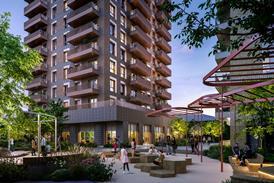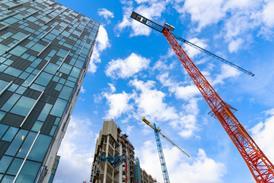David Rudlin explores how biodiversity net gain regulations are clashing with housing growth goals

I had a meeting last week with our in-house ecologist. He started by apologising that, in every meeting at the moment, he seems to be the bearer of bad news.
He had, for example, just been talking to a team working on a site that, until relatively recently, had been a tarmac car park – just the sort of brownfield site that we are being encouraged to develop. However, it was now something far more exotic, having been designated as an Open Mosaic Habitat (OMH) on Previously Developed Land.
Open mosaic refers to sites where there has been disturbance, where soil has been removed or tipping has taken place. It can also include ‘sealed’ surfaces like tarmac and concrete where weathering has allowed plants to become established. These hostile environments support ‘early successional communities’ of stress-tolerant species that colonise ground which is nutrient-poor and prone to drought.
The term mosaic relates to the variety of mini-habitats found on such sites – here some pooled water, there a patch of alkaline soil – each supporting a different plant community and often harbouring rare species. The ecological value results from the hostile conditions and, unlike other more attractive habitats, it is hard to see how open mosaic can be created from scratch.
Nevertheless, under the new Biodiversity Net Gain (BNG) regulations, if these sites are developed, this is exactly what needs to happen. The development of that car park needs to increase its biodiversity by 10%, and there are four potential ways to achieve this:
The first is to re-provide the habitat on-site. This requires some sort of Schrödinger approach in which the site can be developed and not developed at the same time. It is actually worse than that, because, to achieve a net gain, the site also needs to somehow get bigger.
Maybe the record low number of housing applications submitted this year has something to do with the introduction of the BNG regulations in February?
The second option is for the developer to re-provide the habitat elsewhere on land that they own (provided that the other site isn’t also a habitat). So maybe the developer buys another car park or brownfield site and allows it to go back to nature? Or they could just build on that site?
This brings us to the third option, which is to pay someone else to re-provide the habitat. There are companies that will do this (although many find Open Mosaic Habitats difficult). The car park scheme required 16 credits, so the cost would have been north of £600,000 – enough to make the scheme unviable. Failing that, the fourth option is for the developers to buy credits through the government’s statutory credit scheme, which will roughly double that cost. Although DEFRA has not yet developed a mechanism to spend this money.
The planning consultancy Lichfields say, in a blog on this issue, that they know of sites where the cost of BNG credits is three times the total development costs. They also point out that these regulations are non-negotiable and not subject to viability assessments.
We therefore have one arm of government pursuing the laudable goal of protecting biodiversity colliding head-on with another trying to increase housing numbers and promote growth. Maybe the record low number of housing applications submitted this year has something to do with the introduction of the BNG regulations in February?
In the months since the election, I have been speaking to journalists about new towns. The question is always how much of the government’s planned 1.5 million new homes need to go on greenfield sites. The CPRE estimates that there is capacity to accommodate 80% of these new homes on brownfield land. I tend to think this is high and put the figure somewhere between 60% and 70%. But the BNG regulations mean that many of these sites are undevelopable, so all bets are off.
Then of course there is the grey belt – none of that will be open mosaic, surely?
In the Academy of Urbanism journal, we run an occasional series called the Urban Idiot. In a piece from June 2022, the idiot wrote: “this is a column about how good intentions can go wrong. Planning is, after all, almost always trying to do the right thing, but sometimes policies intended to save the environment, protect children, promote healthy living etc… end up creating unfortunate and unforeseen outcomes. This has not yet happened with biodiversity net gain, but it is surely only a matter of time”. That time has come.
Postscript
David Rudlin is director of Urban Design at BDP and visiting professor at Manchester School of Architecture.
He is a co-author of High Street: How our town centres can bounce back from the retail crisis, published by RIBA Publishing.
















5 Readers' comments